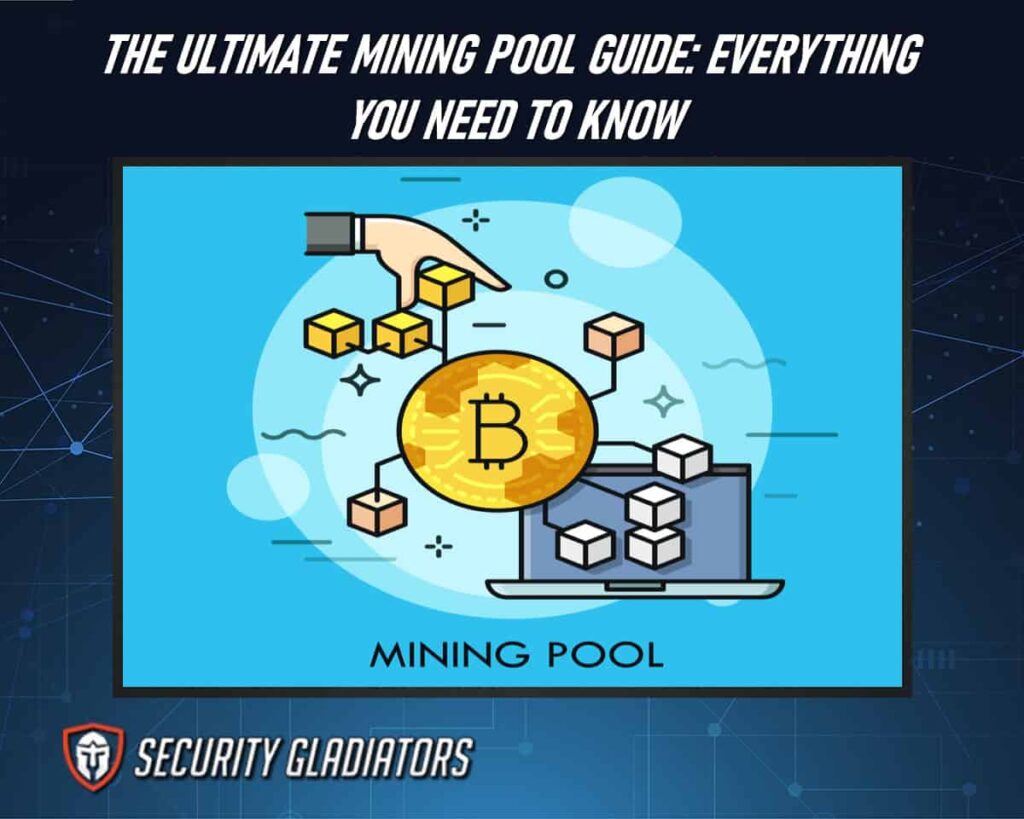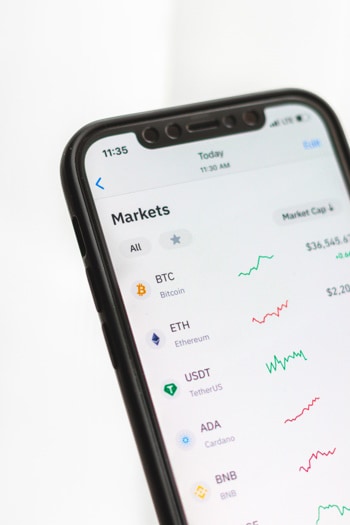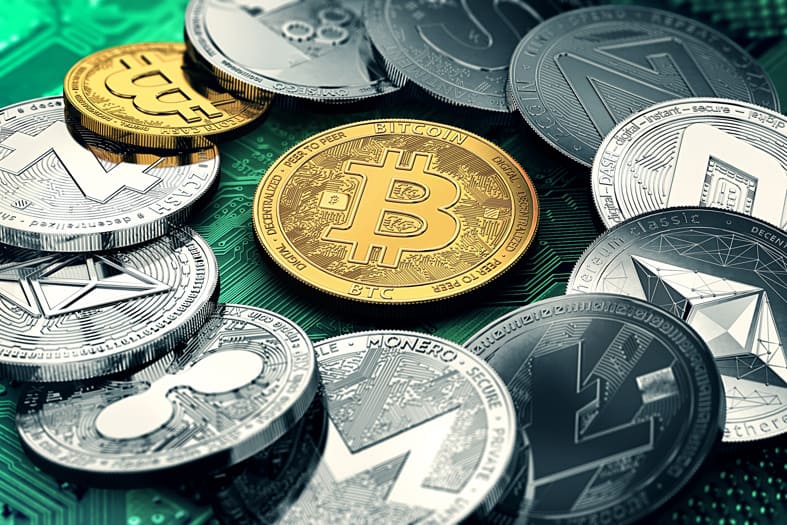
Table of Contents
The Basics of Cryptocurrency Mining
Cryptocurrency mining refers to the process of verifying transactions on a blockchain network, and it is conducted by miners who use specialized equipment to solve complex mathematical algorithms in order to add new blocks to the blockchain. For instance, Bitcoin mining, for instance, involves using processing power to solve cryptographic puzzles that validate transactions and create new blocks. The first miner to solve the puzzle receives a block reward in the form of newly minted bitcoins.
Mining pools are groups of miners who combine their processing power in order to increase their chances of solving these puzzles and earning Bitcoin block rewards. By pooling resources together, miners can collectively contribute more processing power than they would be able to individually. This increases their chances of being the first miner to successfully validate a transaction and earn a block reward. The network hash rate refers to the total amount of processing power being used by all miners on a particular blockchain network. As more miners join the network and contribute their processing power, the hash rate increases. This means that it becomes increasingly difficult for individual miners with limited resources to compete against larger mining operations or mining pools with greater computing power.
System Requirements for Mining Cryptocurrencies
Mining cryptocurrencies requires powerful hardware, including CPUs and GPUs. For example, the best mining CPU’s systems, such as those from Intel or AMD, should have high core counts and strong single-threaded performance for optimal mining efficiency. As for GPUs, models like NVIDIA GeForce RTX 30 series or AMD Radeon RX 6000 series are often considered the best for mining due to their high hash rates and energy efficiency, but it’s crucial to consider factors like cost, power consumption, and availability when selecting the best GPUs for mining.
What Are the Challenges of Solo Mining
Individual miners face significant obstacles when attempting to mine digital assets independently. The most prominent challenge is the lack of hashing power, which is essential for solving complex computational problems required for mining. As a result, individual miners may spend months or even years without earning any rewards from their mining activities. Another significant challenge that individual miners face is profitability. Mining requires substantial investments in equipment, electricity costs, and maintenance fees. These costs can be prohibitively high for individual miners who do not have access to economies of scale or favorable electricity rates. Additionally, digital asset prices are highly volatile and can fluctuate wildly, making it difficult to predict whether mining will be profitable in the long run.
To overcome these challenges, many individual miners join forces and form mining pools. By pooling their hashing power together, they can collectively compete with larger entities like corporations or governments that have massive amounts of computing power dedicated to mining activities. Moreover, joining a mining pool reduces the risk associated with volatility as earnings are distributed among members based on each member’s contribution to the pool’s total hashing power. Also, services such as cloud mining make it easier for individuals to get involved in mining without the need to purchase and maintain their own mining hardware. This accessibility may attract more people to participate in mining, potentially leading to an increased number of miners and a larger network hash rate.
How Mining Pools Work
Mining pools work by distributing the workload among participants according to their level of contribution. Once a block is solved, the reward is divided among all contributors based on their proportional share of work done. The distribution process takes into account both the block reward and transaction fees associated with each block added to the Bitcoin network. This system ensures that every participant receives an equitable share of rewards based on their individual contributions.

How To Join a Mining Pool
To join a mining pool, interested individuals must first find a pool that supports the cryptocurrency they wish to mine. This is important as different pools may support specific cryptocurrencies, making it vital for potential members to research before joining. Once an appropriate pool has been identified, prospective members must create an account on the platform and set up their mining software to connect to the pool’s server. This process can vary depending on the specific pool’s requirements and the type of software being used.
Benefits of Mining Pools
Joining a mining pool presents several advantages for individuals looking to profit from cryptocurrencies. Some key benefits include:
Improved Chances of Earning Rewards
By pooling resources together with other miners, members increase their collective hashing power which improves their odds of finding blocks and receiving rewards.
Stable Payouts
Mining pools typically offer more consistent payouts compared to solo mining as they distribute earnings based on each member’s contribution towards solving block algorithms.
Access to Better Hardware
Through collaboration with other members, miners can collectively afford more powerful hardware setups which further increases their chances of earning rewards.
Reduced Risks
Joining mining pool helps mitigate risks associated with fluctuations in difficulty levels or unexpected equipment failures since earnings are distributed across multiple contributors rather than relying solely on one individual’s success or failure.
Determining Your Share of Rewards
To accurately determine the percentage of rewards earned by each member of a collaborative mining group, it is important to consider factors such as the amount of computational power contributed and the pool’s reward distribution structure. The most common method used by mining pools to distribute rewards is known as proportional sharing. Under this method, each miner’s share of rewards is directly proportional to their contribution towards solving the cryptographic puzzle.
Note:
In order to calculate an individual miner’s contribution towards solving a block, mining pools use the hash rate metric. A higher hash rate indicates higher computational power and therefore results in a larger portion of the block reward being distributed to that miner or mining group. Another factor that can impact an individual’s share of rewards within a mining pool is the fee structure implemented by the pool operator.Most mining pools charge fees ranging from 1-3% for participating in their pool, which is deducted from block rewards before they are distributed among miners. Miners are paid from the pool’s existing balance and can instantly withdraw their money. As such, it is important for miners to understand not only their own contributions but also how fees may impact their overall profitability when choosing which pool(s) to join.
Types of Mining Pools
There are several types of mining pools based on various factors. Here are some common types:
Centralized Mining Pools
These are the traditional mining pools where a central entity manages the pool and distributes mining rewards among the participants. The pool operator handles tasks such as assigning work, validating blocks, and distributing payouts. Slush pool is one of the examples of centralized mining pools and was also the first mining pool.
Decentralized Mining Pools
Unlike centralized pools, decentralized mining pools eliminate the need for a central authority. They operate through a peer-to-peer (P2P) protocol, allowing miners to collaborate directly without a middleman. Popular mining pools utilize a reward distribution mechanism called “pay-per-share” (PPS) or variations of it.
Pay-per-Share (PPS) Pools
In PPS pools, miners are paid a fixed payout for each share they contribute, regardless of whether the pool successfully mines a block or not. This method provides a consistent income stream to miners but may have higher fees to cover the pool’s operational costs.
Proportional Pools
Proportional mining pools distribute rewards proportionally based on the number of valid shares contributed by each miner. When a block is found, the reward is divided among the participants according to their contribution. Miners with higher computational power receive a larger portion of the rewards.
Pay-per-Last-N-Shares (PPLNS) Pools
PPLNS pools calculate rewards based on the number of shares a miner contributed during a specific time frame, typically the last N shares. The rewards are distributed when a block is found, and the payout is higher for miners who provide more recent shares.
Merge Mining Pools
Merge mining pools allow miners to simultaneously mine multiple cryptocurrencies based on the same underlying algorithm. For example, miners can mine Bitcoin and Namecoin together, as Namecoin utilizes Bitcoin’s proof-of-work algorithm. This enables miners to earn additional rewards without consuming extra computational resources.
Geographically Distributed Pools
These mining pools have servers located in different geographical regions to reduce latency and improve connectivity for miners across the globe. By choosing a geographically closer pool, miners can minimize communication delays and potentially increase their mining efficiency.
Selecting the Right Mining Pool for You
Selecting the right mining pool for you can significantly impact your mining profitability and overall experience. Here are some factors to consider when choosing a mining pool:
Hash Rate and Network Distribution
Look for pools with a significant portion of the network hash rate. Pools with higher hash rates have a better chance of mining blocks more frequently, resulting in more consistent rewards. However, joining extremely large pools may result in smaller individual payouts due to increased competition.
Mining Algorithm
Ensure that the mining pool supports the specific algorithm used by the cryptocurrency you intend to mine. Different cryptocurrencies use different algorithms, such as SHA-256 for Bitcoin or Ethash for Ethereum. Verify that the pool supports the algorithm you require.
Pool Fees
A vast majority of mining pools charge fees to cover their operational costs. These fees are typically deducted from the mining rewards you earn. Compare the fee structures of different pools and consider the services and features they offer in relation to the fees charged. Keep in mind that the lowest fee pool may not always be the best choice if it lacks reliability or has poor support.
Payout Structure
Understand the payout mechanisms offered by the pool. Pools can use different methods like PPS, proportional, PPLNS, or others. Consider the payout method that aligns with your mining goals and risk tolerance. Some miners prefer a stable income with PPS, while others seek potentially higher payouts with proportional or PPLNS methods.
Pool Reputation and Reliability
Research the reputation and track record of the mining pool. Look for pools that have been operating for a significant period without major issues or security breaches. Online forums and mining community discussions can provide insights into the pool’s reliability, transparency, and customer support.
Pool Size and Stability
Consider the size and stability of the pool. Larger pools generally offer more consistent payouts, but they may have higher competition among miners. Smaller pools may provide a more personalized experience but could have less frequent block discoveries. Strike a balance between pool size and stability that aligns with your mining objectives.
Additional Features and Support
Some pools offer additional features like mining statistics, user-friendly interfaces, mobile apps, merged mining, or unique reward mechanisms. Consider these extra features and determine if they enhance your mining experience or contribute to your overall profitability.
Geographic Location
Depending on your location, choosing a mining pool with servers geographically closer to you can reduce latency and improve mining efficiency. Lower latency can help to minimize communication delays and increase the speed at which your mining hardware can receive and submit work.
How To Set Up Your Mining Pool Account
To successfully set up a mining pool account, it is crucial to follow the registration process thoroughly and ensure all required details are accurately provided.

- Select a mining pool that aligns with your desired cryptocurrency, mining algorithm, and preferences.
- Visit the mining pool’s website and create an account by providing the required information.
- Set up a wallet for the cryptocurrency you plan to mine and obtain a wallet address to receive your mining rewards.
- Download and install mining software compatible with your mining hardware and configure it to connect to the mining pool.
- Enter the pool’s server address and port in your mining software’s configuration settings to connect your mining hardware to the pool.
- Create one or more worker accounts within your mining pool account to track the mining performance of individual mining rigs or devices.
- Specify your payout threshold or payment frequency in your mining pool account settings to determine when you’ll receive your mining rewards.
- Keep an eye on your mining pool account’s dashboard or statistics page to track your hash rate, shares submitted, and potential earnings.
- Adjust your mining software settings, hardware configurations, or pool choices as needed to improve mining efficiency or address any issues encountered.
- Once you reach your specified payout threshold or when the payment frequency is met, initiate a withdrawal of your mining rewards to your wallet address.
Maximizing Your Profits With Mining Pools
Maximizing profits with mining pools can be achieved through several methods. One way is to choose a pool that offers lower fees or has higher payout thresholds. This will allow miners to keep more of their earnings and reduce transaction costs. Another way is to join a large and established pool as they typically have more consistent payouts due to their larger network and computing power.

Furthermore, it is important for Bitcoin miners to consider which cryptocurrency they are mining as some may be more profitable than others. Bitcoin, for example, has a high difficulty level which means it requires more computing power and energy consumption compared to other cryptocurrencies. As such, joining a Bitcoin-specific mining pool may not always lead to maximum profitability. Maximizing profits with mining pools requires careful consideration of factors such as fees, payout thresholds, network size, and the cryptocurrency being mined.
Future Trends in Mining Pool Technology
One potential area of development in the realm of distributed ledger technology is the advancement of mining pool algorithms to improve efficiency and reduce energy consumption. However, current mining pool technology has its limitations as it requires a significant amount of computational resources and consumes a considerable amount of energy.
To address these concerns, several future trends in mining pool technology are emerging. Firstly, there is a growing focus on developing more efficient algorithms that can optimize the use of computing resources. This means that mining pools will be able to process transactions faster while consuming less energy. Secondly, there is a push towards making mining pools more decentralized by implementing new protocols such as Proof-of-Stake (PoS) or Proof-of-Work (PoW). This would allow for greater participation from individual miners and reduce the risk of centralization within the network. Thirdly, advancements in artificial intelligence (AI) could also play a significant role in shaping the future of mining pool technology. AI algorithms could be used to predict market trends and adjust mining strategies accordingly. Lastly, there is also a growing interest in using renewable sources of energy for powering mining operations. By tapping into green energy sources such as solar or wind power, miners can significantly reduce their carbon footprint while still earning profits from cryptocurrency mining.
Frequently Asked Questions
How Often Are Payouts Distributed in a Mining Pool?
Payout distribution in a mining pool depends on several factors, such as the mining pool’s policies and the type of cryptocurrency being mined. Generally, mining pools distribute payouts to their members periodically, often daily or weekly, based on the proportion of computing power contributed by each member.
The payout system is usually automatic and transparent, with each member having access to real-time data on their earnings and contributions. Some mining pools may have different payout thresholds or fee structures that affect how often payouts are distributed.
Can You Switch Mining Pools at Any Time?
Yes, switching mining pools is possible and can be done at any time. However, it is important to note that different mining pools offer varying levels of benefits and may have different payout structures. As such, miners should do their due diligence in researching the various options available to them before making a switch. Additionally, changing pools may also involve some technical adjustments such as updating mining software or configuring new pool settings.
What Happens if Your Mining Pool Shuts Down?
If a mining pool shuts down, it can have serious consequences for the miners who were using it. The most immediate impact is that they will stop receiving payouts for the work they have done until they join a new pool or start solo mining. Additionally, if the shutdown was unexpected, it could cause hardware damage or loss of funds due to unpaid balances on the pool. Miners should always be vigilant and monitor their chosen pools regularly to ensure that they are financially stable and secure. In case of any signs of trouble, it is advisable to switch to another pool as soon as possible to minimize potential losses. Overall, while mining pools offer many benefits in terms of increased efficiency and profitability, there are also risks involved that need to be carefully considered before joining any particular pool.
What Is the Differences Between Bitcoin and Bitcoin Cash?
Bitcoin Cash (BCH) is a digital cryptocurrency that was created as a result of a hard fork from the original Bitcoin (BTC) network. Bitcoin Cash was designed to address certain limitations of Bitcoin, primarily related to scalability and transaction speed. The key difference between Bitcoin Cash and Bitcoin lies in their block size limit.
Bitcoin has a block size limit of 1 megabyte (MB), which can restrict the number of transactions processed per block and cause delays and high transaction fees during periods of increased demand. Bitcoin Cash, on the other hand, increased the block size limit to 8 MB initially, and later increased it further to 32 MB through a subsequent hard fork.
Conclusion
While cryptocurrency mining can be a complicated process with numerous challenges, joining a reliable mining pool can offer many benefits for those looking to generate consistent profits from their efforts. With careful research and the selection of the right pool based on individual needs, miners can mitigate risks associated with solo mining while enjoying more predictable rewards over time. As technology advances and new innovations emerge within the industry, it will be interesting to see how this space evolves further in regards to optimizing profitability through pooling resources effectively.

